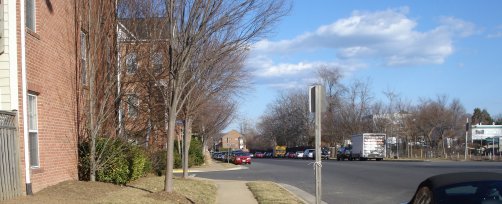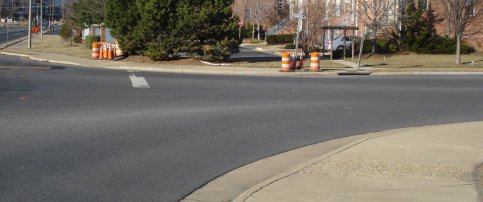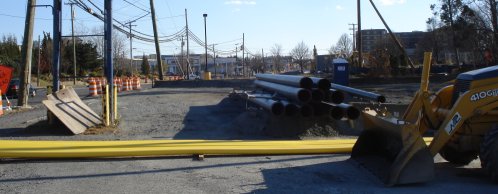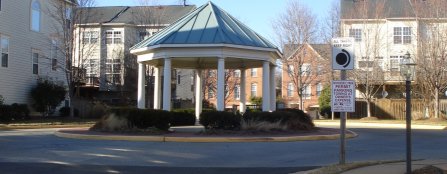We create a lot of our own troubles by demanding standards that individually make sense but together make our world less pleasant. Today I went to an urban forestry meeting where we discussed trees and roads. It turns out that our policies are a big part of the reasons we do not have beautiful tree lined vistas, why it is scary to be pedestrians and why we don’t have the tree canopy in our cities and suburbs that could give us shade and help keep our water cleaner.

Let’s start out with street trees. I imagine the trees near the streets on that little belt of grass. Today’s rules don’t permit that unless they can be several feet from the road. Otherwise they are hazards to traffic. Usually there is not enough room on the grass strips, especially because our new roads tend to be way wider than they need to be. I understand why you don’t want obstacles (like trees) along high speed highways, but city streets are different. On the city streets having trees on the grass next to the curb is not only more attractive; it is also safer … for pedestrians. I would rather the car hit a tree than hit me. Beyond that, the speed limit on city streets should preclude the trees being a real danger. Only a drunk or a manic would veer off a straight city street and hit anything on the side. But it is clear that road designers see everything from the car point of view.
The woman explaining the rules told us that anything near the road has to be “breakaway” so that it is not a danger to a car that hits it. Trees cannot be made break away, which is why they cannot be close to the road. The thing that surprised me is that bus stop shelters are designed to be “break away”. I think they should make an exception for bus stop shelters. If a car comes careening across the sidewalk, I would hope that the bus stop can at least slow it down before it hits the “break away” pedestrian sitting in the shelter.

The car point of view is also why they round the curves. You can see an example above from just outside my townhouse complex. This very wide strip of pavement is supposedly a city street. The speed limit is 25 and there are lots of pedestrians. The cars should not be taking that corner fast enough to require the rounding. Every time I cross that street at the place shown, I have to keep looking over my shoulder to watch for the idiot making a high speed turn while talking on his/her cell phone. I would prefer that they have to slow down to make the squared corner. Maybe put both hands on the steering wheel.
BTW – they are going to make the road above even wider. It is one of those shovel ready projects that the bailout money will buy. I am glad it will create a few jobs, but I don’t really welcome the prospect of having an even longer jeopardy zone to cross. It is like that old video game “frogger.”
In a very good book about livable places, A Pattern Language, the authors studied patterns that people around the world like in the places they live. People feel more comfortable with narrower roads with buildings and plants near the road. Of course this is when they are walking or just living nearby. Drivers like wide open roads with no obstacles. We all impose suffering on each other by thinking like drivers when passing through somebody else’s neighborhood. Our love of driving has destroyed the attractiveness of our cities.

One reason our roads and the areas around them have to be so wide is that utilities are placed far from the actual road. Suburban roads don’t have manholes and that is why. The total road footprint is a couple of football fields wide.
Something we could use around here are traffic circles or roundabouts. They work very well in UK. Traffic moves through. Drivers yield to the traffic already in the circle and enter and leave w/o the need of stop lights or stop signs. We cannot seem to pull it off. We don’t even try to put them in real streets anymore. The original design of Washington included circles, which now just confuse and perplex drivers. The one in the picture is mostly decorative. It is the traffic circle at our complex. Notice even in this simple case they have to have a sign telling people what to do. They also have stop signs on the sides. Ruins the advantage.

The tragedy is that all of us are making good decisions for ourselves but taken together they end up being bad decisions for all of us. Most of us are drivers and we all like convenience, but we should consider how much it is really costing us.
